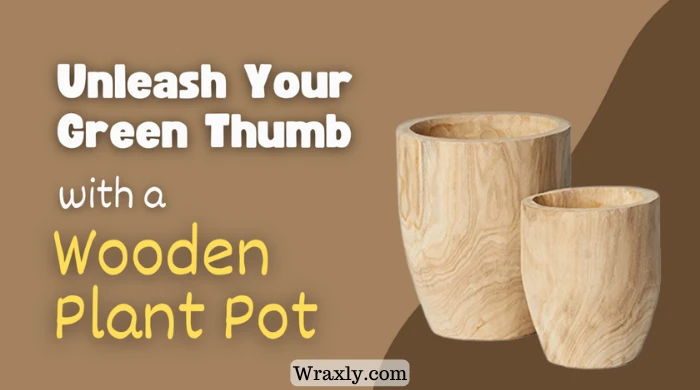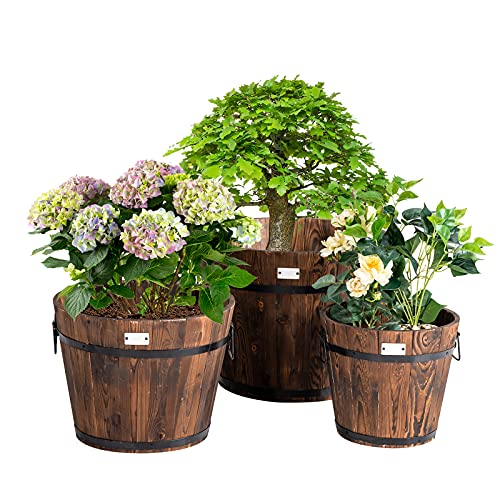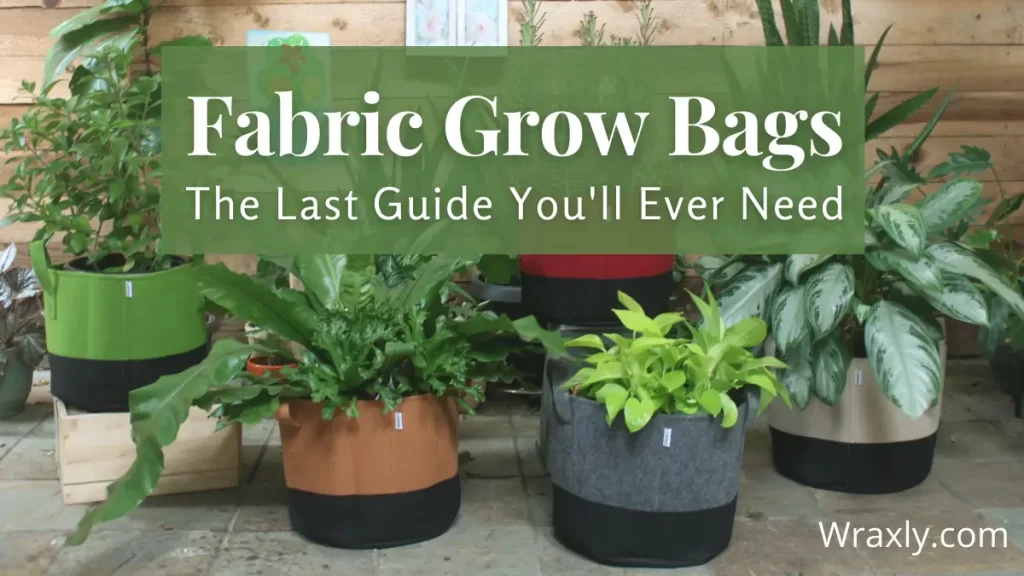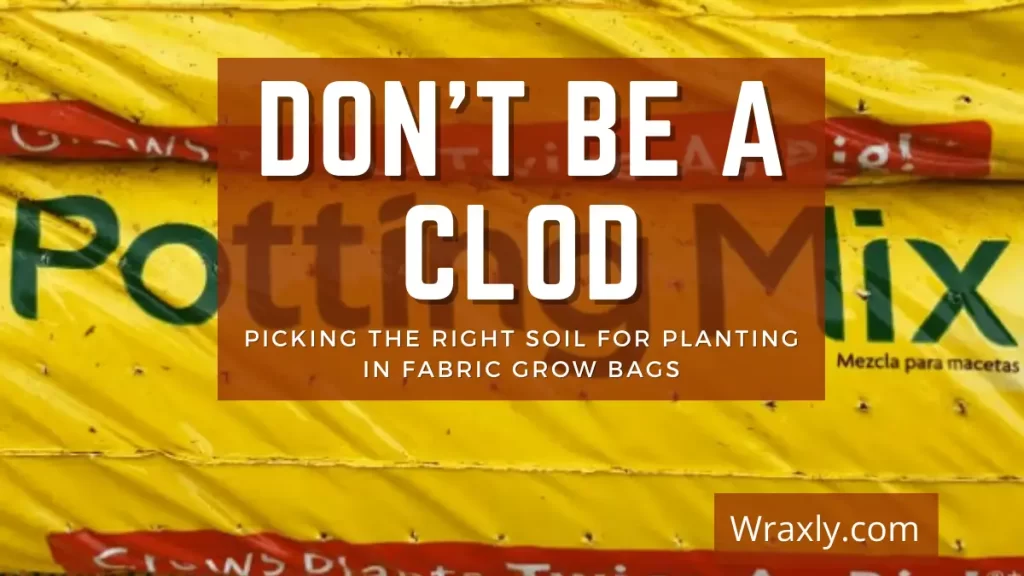Clay and plastic pots aren’t the only options in the market that you can use to grow plants and vegetables. There are wooden plant pots available that can help you achieve your gardening goals with less impact on the environment.
Although clay pots are eco-friendly, they have their own set of drawbacks. They have no flexibility, so it’s very tricky to handle them, and you can end up with a broken pot with a single mistake. Additionally, they’re also prone to cracks due to freeze and thaw cycles.
That’s where wooden plant pots come into play. They’re not only eco-friendly and durable but can also help you save money in the long run, as they can last for years.
In this article, I’ll discuss everything you need to know about wooden plant pots to help you achieve your gardening goals in an eco-friendly way.

- Why Should You Use Wooden Plant Pots?
- The Downside of Using Wooden Pots
- Tips To Use Wooden Pots Effectively
- Best Wooden Plant Pots
- Final Words
Why Should You Use Wooden Plant Pots?
Wooden plant pots can be an excellent addition to your garden or indoor space. Not only do they look good, but they also offer a range of other benefits, including the following:
Eco-Friendly
Wooden planters are biodegradable, and they don’t harm the environment in any way. It makes them the best option for people who are concerned about their impact on the environment.
They decompose over time and don’t leave any harmful waste, unlike plastic containers that end up in landfills.
Breathability
One of the key advantages of wooden plant pots is their breathability. Unlike some other materials like plastic and resin that can suffocate plant roots, wood allows for natural air circulation.
It creates a healthier environment for your plants, which allows them to thrive. This unique feature can regulate moisture levels to prevent overwatering and root rot and contribute to healthy plant growth.
Insulation
Wood has low thermal conductivity, which means it’s resistant to temperature changes. It allows wooden planters to create a shield to protect the roots of your plants from both harsh cold and scorching heat.
This natural thermal barrier ensures a more stable environment for your plants to help them thrive. So, having wooden plant pots in your garden also means you won’t need to worry too much about sudden weather changes.
Ease of Mobility
If you like to rearrange the layout of your garden frequently or need to move your plants indoors during colder months, using wooden planters is the best option. That’s because they’re lightweight, and you can move them around easily.
Durability
Wooden plant pots are known for their remarkable durability, lasting for years or even decades. They’re more flexible than clay pots, which can shatter with a single mishap.
While they can develop mold due to weather conditions, they rarely fall victim to cracks and fractures. Not only does it save you from the hassle of buying new pots again and again, but it can also save you a lot of money in the long run.
Aesthetic Appeal
Another great advantage of using wooden plant pots is that they add more beauty and character to your garden or living space. Their natural beauty complements various plant varieties to enhance their visual appeal.
Whether you prefer a rustic charm or a modern aesthetic, you can integrate these planters into any design style.
The Downside of Using Wooden Pots
While there’s a wide range of benefits that wooden plant pots bring to the table, they also have their own set of downsides that you should understand.
Decay and Rot
Wooden planters are susceptible to decay and rot, especially when exposed to moisture constantly. Their natural material breaks down when in contact with water, and it’ll lead to a shortened lifespan.
Regular maintenance and proper drainage are required to minimize this risk. To maximize their lifespan, you’ll need to paint, stain, or reseal your wooden pots.
Initial Cost
High-quality wooden planters can be more expensive upfront than some other materials. The cost of the wood itself, along with any necessary treatments or finishes, can contribute to higher initial investment.
Susceptibility to Pests
Another disadvantage of using wooden planters is that they can attract pests like termites, ants, and fungi. They thrive in damp environments; without proper care and maintenance, they can damage the planter and your plants.
Tips To Use Wooden Pots Effectively
Here’s a list of tips that you can follow to maximize the lifespan of your wooden containers and save money.
- Line your wooden containers with heavy-duty plastic to prolong their lifespan. But make sure that you choose plastic bags that have drainage holes in them. It’ll allow you to prevent water accumulation to protect your plants.
- It’s an excellent idea to paint your wooden planters with bright colors. Not only will it add an extra layer of protection for your planters, but it’ll also enhance the visual appeal of your garden.
- It’s important to use pot feet to elevate your wooden containers. It’ll keep them from touching the ground, improve drainage, and reduce the risk of rot. Additionally, it’ll also add a stylish touch to your arrangement.
- The best way to extend the life of your wooden planters is to perform maintenance at the end of each growing season. Empty the containers, clean them thoroughly (especially the inside), and reseal the wood using a wood preservative or sealant. Make sure you store them in a dry and dark location for winter to keep them safe.
- If you’re on a budget and don’t want to spend money on new wooden planters, consider transforming old wooden dresser drawers into planting containers. You can also look for old wooden boxes and crates at yard sales for the same purpose.
- If you’re a DIY enthusiast and constructing your own wooden pots, make sure that you use screws, nails, and fasteners made of stainless steel or other corrosion-resistant metals. It’ll prevent deterioration due to rust or corrosion and increase the longevity of your containers.
Best Wooden Plant Pots
Now that you understand why using wooden plant pots is a great option and how to maintain them properly, let’s discuss the best options available in the market.
OIPRTGFJ Wooden Wagon Planter Box: Most Stylish
If you want a big yet stylish wooden planter for your garden, you can go with the OIPRTGFJ Wooden Wagon Planter Box. It comes with two big planters that you can use to grow flowers, vegetables, or any other plant you want.
- 【Product】: Garden Cart Wooden Charcoal box.The products width and length can safely accommodate your plants. It provides you with enough space to plant different flowers or plants. It perfectly protects the root of the flower, allowing it to grow healthily.
- 【Durable】: Made of high-quality cedar and burned-treated, this seeder cart has high weather resistance. Natural and sustainable materials perfectly match the style of your garden or courtyard.
- 【Range of application】 It can be placed outdoors all year round in courtyards, balconies, or other outdoor spaces to improve the appearance. It is a perfect choice for planting and exhibiting flowers, vegetables and fruits.
- 【Easy to assemble】: Includes all accessories, instructions to help you assemble better and protect your hands. The overall product size is 17 * 17.71 * 15.12inches
- 【Promise】: If you are not satisfied with the product you purchased from us, please contact us, we will provide you with satisfactory solutions. If you encounter any problem while assembling the flower pot, you can contact us anyti
Pros
- Stylish design
- Two planting areas
- Easy-to-follow instructions for assembly
Cons
- Need to be assembled
HABITAS Wooden Plant Pots: Most Elegant
The HABITAS Wooden Plant Pots package has three plant pots of different sizes (10,8 and 6 inches).
These bamboo pots are handmade and make for a perfect option for growing indoor plants. If you’re a minimalist and prefer simple yet elegant planters, you can’t go wrong with this option.
- These spun bamboo plant pots will add the warmth of handmade, natural materials to your home. Rather than heavy ceramic pots, our ultra lightweight planter set is easy to arrange to bring a clean look wherever you need pots for plants in your home.
- Keep your commitment to using sustainable materials in your home with these planters for indoor plants. Bamboo is one of the most sustainable materials on the planet; it grows extremely fast, requires minimal watering, and doesn’t need pesticides.
- Habitas Spun Bamboo is made by hand in Vietnam using an 800 year old technique to work the bamboo into form. Our plant pot features a sleek polished interior and a delightfully smooth painted exterior - choose your accent color: white or black
- Use these plant pots indoor as pots for plants, flower pots, or to display branches. Keep everything in its place using our sleek round plant pot as a modern storage solution - more than just indoor plant pots, the possibilities are endless!
- Each set of pots for indoor plants includes three pot sizes: 10, 8, and 6 inch Diameter. 90 Day Satisfaction Money Back Guaran
Pros
- Elegant design
- Made of durable bamboo
- Two planters in a single package
Cons
- Not suitable for outdoors
Boldly Raised Garden Planter: Most Durable
While the Boldly Raised Garden Planter is a bit costlier than other options listed here, it’s also the most durable.
It’s a raised planter made of high-quality, unfinished, rot-resistant cedar wood that’ll add to the natural appeal of your garden. If you’re looking for something that can service you for years, you can consider going with this option.
- TOP QUALITY CONSTRUCTION: This raised planter box kit is easy to assemble and built to last
- NATURAL, UNFINISHED WOOD: Product looks great as-is, or finish planter box to your own liking
- STURDY DESIGN: This beautiful elevated garden planter is the perfect addition to any space
- STRONG, ROT-RESISTANT CEDAR WOOD: Easily supports the weight of soil, water, and plants without cracking!
- PRODUCT DIMENSIONS: 32” (L) by 24” (W) x 18” (H) and holds 3 cubic feet of s
Pros
- Top-quality, rot-resistant cedar wood
- Durable construction
- Large planting area
Cons
- A little expensive
LZRS Raised Garden Planter Box: Most Practice
If you want a wooden planter that’s designed with practicality in mind, the LZRS Raised Garden Planter Box can be your best option. It’s also a raised planter made of high-quality fir wood, making it an ideal choice for gardens, decks, lawns, backyards, and patios.
- 100% FIR WOOD MATERIAL: LZRS raised garden bed is made of high quality fir wood, which is durable enough to provide strong support to your plants, and it can be used for a long time.Fir wood is known for its strength and dimensional stability,it has a natural texture and color and a unique fragrance, it is a good material to be used as a flower pot.
- LARGE PLANTING SPACE: Raised planter box designed with a nearly 10’’ bed deep enough to ensure your plants and vegetables can breathe and grow healthy.
- ERGONOMIC HEIGHT:LZRS raised planter bed designed by 30-inch height, removes the need for bending or kneeling, the upright styling alleviates stress and tension from legs, knees, neck, shoulders which allows you grow and maintain your plants with ease and confidence.
- SUPERIOR DRAINAGE:The drainage holes at the bottom of the patio wooden bed allows excess water to drain out. The design can not only drain excess water but also promote plants’ photosynthesis. LZRS flower bed is perfect for planting and displaying flowers, vegetables, and fruits. Perfect for Patio, Backyard, Lawn, Deck, Garden.
- Customer Service : LZRS Customer Service is here to help! If you have any question,Please contact with us. We will reply in 24 hours. Customer satisfaction is our #1 Go
Pros
- Designed with practicality in mind
- Ergonomic height
- Excellent drainage
Cons
- Assembly is needed
Briful Rectangle Wooden Planter: Most Affordable
If you’re on a very tight budget and don’t want to spend a considerable amount of money on a plant pot, you might want to consider the Briful Rectangle Wooden Planter.
It’s an affordable, handmade product made of aged pine wood. It has a vintage style and is available in three different color schemes so that you can choose the preferred one.
- Wooden crate planter has vintage style, wood planters crafted from natural wood, wooden garden box is ideal to decorate your home or garden, small wooden flower boxes adds a terrific rustic flair.
- Farmhouse wood planter box is constructed of real wood, meaning there wooden log planter may be some color differences and variations in wood grain and knots, making each wood flower box rustic and unique.
- Hand made wooden planter box rectangular made of natural aged pine wood, wooden planter boxes outdoor may cause damage to the wooden planters for outdoor plants due to outdoor conditions, wooden pots for plants no drainage hole.
- Wood box for centerpiece not only for wooden pot planter, but can also be used in succulent wood box, wooden flower pot, garden wood planter, wood herb planter.
- Planters box wood size: Large wooden planter 10 L * 5 W * 3.9 H; Briful has lots of styles of flower pots, metal pots of various colors, and wooden pots of various styles for you to choose. Welcome to Our sto
Pros
- Very affordable
- Multiple color options
- Durable pine wood construction
Cons
- No drainage holes
Giantex 3 Pieces Barrel Planter: Honorable Mention
This package also comes with three pots featuring different sizes (11.5, 15, and 18 inches). These wooden plant pots are ideal for growing herbs, vegetables, and flowers. If you’re following a rustic theme in your garden, this product will suit you the best.
- 『Practical 3 Pieces Bucket Set』: Our flower pots come with 3 different sizes, including 11.5”, 15” and 18” wide buckets. Multiple sizes design fulfills your different needs, which is suitable for cultivating flowers, vegetables, herbs, etc. In addition, you can put the small bucket into the medium bucket and then store them in the large one, occupying less floor space.
- 『Solid Fir Wood Made』: The bucket set is made of premium fir wood, ensuring great strength and durability. With special craftwork, it will not deform easily. The surface of the bucket is also well-polished to prevent injuries while 2 steel bands are designed for added stability.
- 『Drainage Hole & Side Handles』: The planter box is equipped with a drainage hole on the bottom, which is convenient to drain out excess water. It will create a healthy living condition for your plants and ensure strong root growth. Moreover, each bucket features 2 steel handles for easy lifting and carrying.
- 『Indoor & Outdoor Use』: Our barrel set is a good choice for garden lovers and brings convenience to daily garden care. These eye-catching rustic buckets can be used to decorate indoor and outdoor places, such as balcony, porch, backyard, living room, etc. Your lovely plants will breathe freely and grow better with our flowerpots.
- 『No Assembly Required & Easy Maintenance』: There is no need to assemble the bucket set. Durable wood surface looks classy and makes for easy maintenance. Small Bucket Size: Φ11.5” x 10.5”(H). Medium Bucket Size: Φ15” x 11.5”(H). Large Bucket Size: Φ18” x 14.5”(
Pros
- Three wooden plant pots
- Excellent for both indoors and outdoors
- Appealing rustic look
Cons
- Construction could be sturdier
Final Words
Wooden plant pots make for a better option than many other materials, not only because of their aesthetics but also due to practical reasons. They’re environmentally friendly, can be more beneficial for your plants, and can help you save money in the long run.
I hope this guide has helped you understand why you should use wooden plant pots and how to care for them properly. Don’t forget to go through the list of the best options discussed above to choose the planter that suits you the best.

Darrell has a passion for gardening that he inherited from his father. Go here to read more about the influence his father played in his love for gardening. If you want to send Darrell a quick message, then visit his contact page here.









![Container gardening for beginners [Buying guide]](https://wraxly.com/wp-content/uploads/2021/02/Container-gardening-for-beginners-Buying-guide-1200-1024x576.webp)